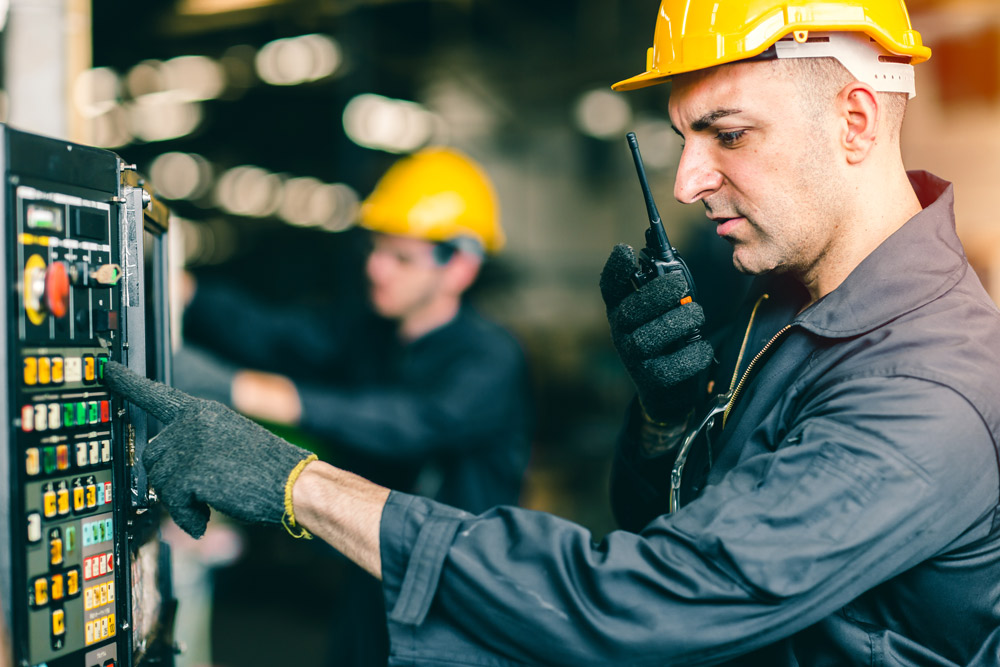
In today’s fast-paced, demanding industries, effective communication is essential for worker safety and efficiency. Industrial radio communication systems are a reliable and affordable option for staying in touch in tough environments.
Whether you’re working in construction, manufacturing, or any other industrial sector, understanding the basics of these systems is essential. In this beginner’s guide, you will learn a few things about industrial radio communication systems.
When it comes to industrial radio communication systems, there are several types available to cater to different needs and environments, including:
Analog systems are like the radios you may have seen in the past. Just like when you talk on the phone, these systems send voices using continuous signals. They are simple and have been around for a while, but they might not have all the cool features of newer systems.
Digital systems are like smartphones or industrial radios. The voices are turned into digital signals, improving the call’s quality and speeding it up. With digital systems, you can get better sound and privacy and even use your voice to send data.
Hybrid systems are a bit like having the best of both worlds. They combine elements of both analog and digital systems. Imagine a car that can run on gas or electricity – it’s flexible and adaptable. In fact, hybrid systems let industries choose the features they need.
Industrial radio systems comprise several key components that work together to ensure seamless communication within the industrial environment, and these are:
Radios are like walkie-talkies, allowing workers to transmit and receive messages wirelessly. On the other hand, handsets are the portable units that workers carry for communication. They are vital for real-time coordination and information exchange in industrial settings.
In industrial radio systems, base stations are the hubs that connect everything. They make sure that radios can talk to each other and connect to outside networks. By amplifying and sending signals again, repeaters increase the range of communication. They help overcome obstacles, ensure seamless coverage across large industrial facilities, and improve system reliability.
Antennas are the components that send and receive radio signals. They come in various types, such as omnidirectional and directional, each serving specific purposes.
Conversely, towers elevate antennas to higher positions, enhancing signal coverage. The strategic placement of antennas and towers optimizes the radio system’s performance, ensuring effective communication in diverse industrial environments.
Batteries and power systems provide the energy needed to keep radios, handsets, base stations, and repeaters operational. Reliable power sources are crucial for continuous communication. In fact, batteries in radios and handsets need to be durable for extended use.
At the same time, base stations and repeaters may rely on both primary and backup power sources to ensure uninterrupted communication, especially during power outages or emergencies.
Industrial radio communication has come a long way with advances in technology. Here are some key enhancements worth mentioning:
One significant enhancement in industrial radio communication is its integration with the Internet of Things (IoT) and other wireless technologies. This integration makes it possible for radio systems and other connected devices to share useful data, which makes the workflow more complete and effective.
Modern industrial radio communication has been improved by adding new features that make it safer and more effective. Features like GPS tracking make it possible to keep a close eye on where workers are at all times, ensuring they are safe in big, complicated factories. Also, emergency alert systems let people act quickly in dangerous situations, which makes the workplace safer.
As the landscape evolves, understanding these advancements will empower you to make the most of the tools at your disposal, fostering a safer, more efficient, and connected workplace. The innovation journey is ongoing, and by staying informed, you position yourself at the forefront of this exciting evolution.
Copyright © 2023 California Business Journal. All Rights Reserved.
As a violinist, I can't stress enough how crucial a top-notch case is in the…
Imagine a life where limitations do not exist—a life where you relentlessly pursue your dreams…
Asbestos exposure has left a long legacy of health issues in Australia, particularly mesothelioma and…
Did you know maintenance and financing, fuel management, driver management, vehicle monitoring and diagnostics, and…
It can be difficult to meet a matching spouse in this fast-paced environment. Online dating…
The interior design industry has become increasingly popular in recent years as people seek homes…